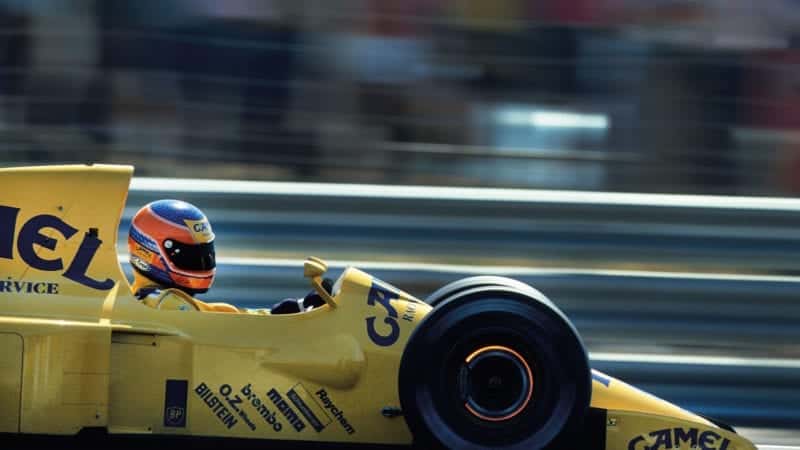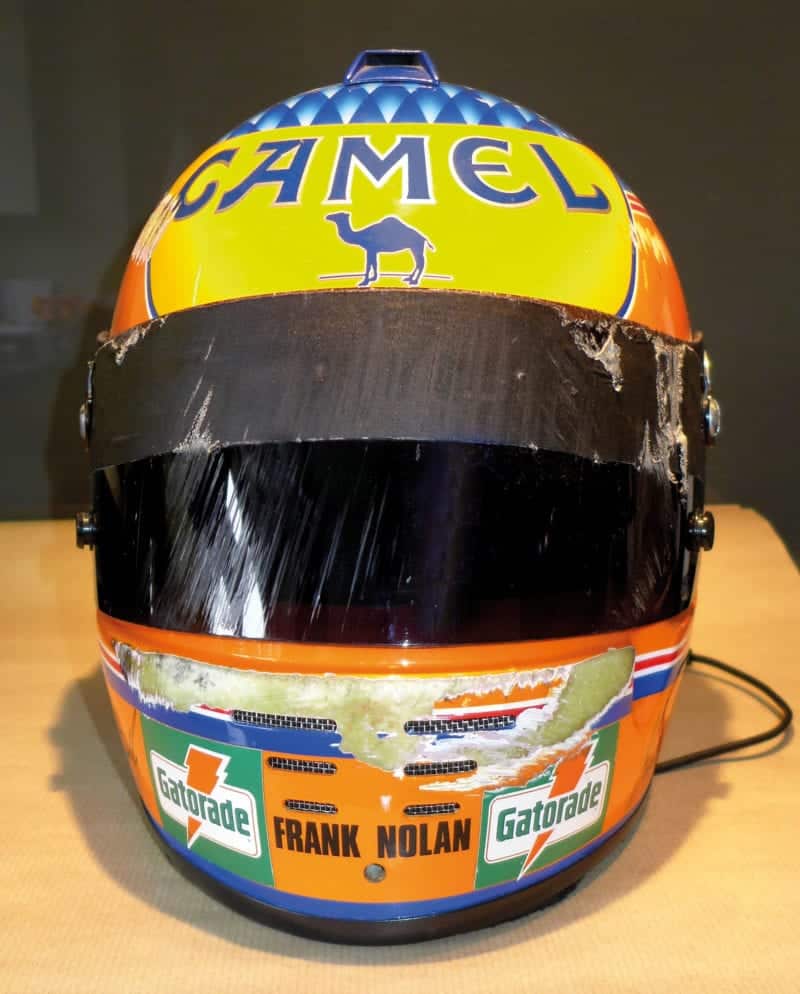The helmet companies could have been given the target of prototypes in one year, finished project in use on the track within maximum of three. Instead the project took 10 years and produced a compromised design that has required several updates since. So, safety is a long process. I also remember Karl Wendlinger’s accident in Monaco 1994. His helmet still had the old version of the big heavy speakers, even though the lighter ones were available for 4 years! But at that time, everyone said it was useless…
At that time, helmet manufacturers were supposed to get a pass from their drivers for their staff to enter the paddock and pit area. It was a different era and helmet technicians were not considered ’necessary’ in the paddock to support their drivers. But as the drivers only had two guest passes… Anyway I didn’t have a pass. Of 26 drivers on the grid, Arai equipped 18 or 19 of them! Helmets needed to be prepared for practice, qualification and race, with different visors. A huge amount of work, and nowhere to do it!
“Suddenly, DC appeared with a Schumacher helmet! I almost lost my job that day”
On the second day, I talked to Johnny Herbert through the fence! Michael Schumacher, his teammate at Benetton (& Bell no1 driver), arrived, understood the situation and got me a pass for the weekend. For 1996, I managed to get a green pass each race. This gave me access to paddock, but not pits.
But at Monaco, the pits are separated from the paddock. No problems before the race. But during the pre-grid lap, David Coulthard had fogging. He couldn’t see anything! It was manna from heaven for Bell who wanted to sign DC. I couldn’t do anything from the paddock.

David Coulthard had to borrow one of Michael Schumacher’s spare lids at ’96 Monaco GP
DPPI
The radio was ripped out of his Arai helmet, and suddenly, DC appeared with a Schumacher helmet! I almost lost my job that day. But as soon as the situation was explained, things got back to normal. DC used an Arai helmet till the end of his career.
The notable fact is that Panis won that race with an Arai helmet, with no fogging issues. And it wasn’t as though he hadn’t been behind other cars in the spray through a good bit of the race before taking the lead!”



